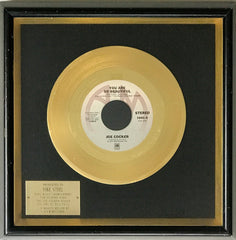In the digital age, music has become more accessible than ever before. With the click of a button or a voice command, we can summon our favorite tunes from a vast ocean of songs. While the convenience of streaming services and digital downloads has undoubtedly revolutionized the way we consume music, it has also ushered in the decline of a once-beloved art form: album art.
For many music enthusiasts, the album cover was an integral part of the listening experience. It was a tangible representation of the artist's vision, an extension of the music itself. Each album cover was a miniature work of art, a window into the soul of the music it contained. In just a 12x12-inch square, album art had the power to captivate, mystify, provoke, and convey the essence of the music within.
The golden age of album art, spanning from the 1960s through the 1980s, produced some of the most iconic and enduring images in popular culture. Consider the vibrant collage on The Beatles' Sgt. Pepper's Lonely Hearts Club Band, the prism of Pink Floyd's The Dark Side of the Moon, or the gritty urban landscape of Bruce Springsteen's Born to Run. These covers, and countless others, became symbols of their respective eras and genres.
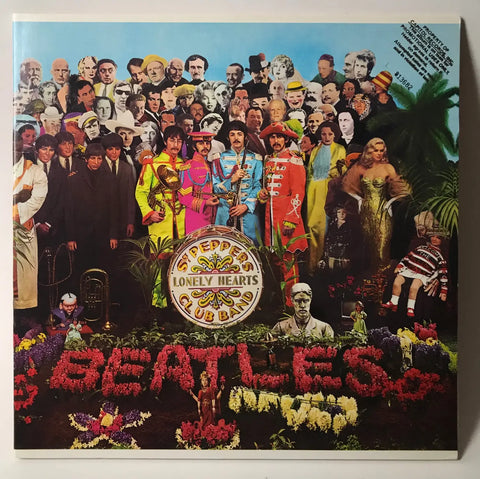 The Beatles iconic Sgt. Pepper's Lonely Hearts Club Band album cover was designed by Peter Blake and Jann Hayworth
The Beatles iconic Sgt. Pepper's Lonely Hearts Club Band album cover was designed by Peter Blake and Jann Hayworth
Album art was not merely an afterthought; it was a collaborative effort between musicians and visual artists. Visionaries like Storm Thorgerson, who designed surreal covers for Pink Floyd, Led Zeppelin and many others, and Roger Dean, known for his fantastical landscapes gracing Yes albums, brought their artistic prowess to the world of music. These artists understood that an album cover could elevate the music, creating a visual narrative that deepened the listener's connection.
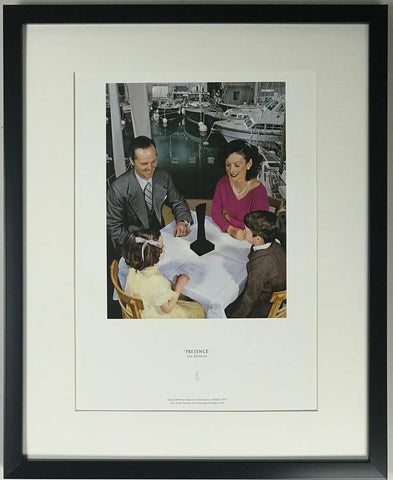
Led Zeppelin's 1976 Presence album art concept included creating 1,000 numbered copies of "The Object," the obelisk-like item in the center of the table
Sometimes album art inspired collectibles outside of the album cover, a trend seen with many artists today on their custom vinyl releases. When Storm Thorgerson's Hipgnosis art collective joined together with George Hardie to create Led Zeppelin's 1976 Presence album art with its' mysterious obelisk "The Object" on the table, the plan also included creating 1,000 numbered "Objects." These were distributed mostly to music industry staff and today originals are very desirable collectibles, each fetching $4,000 or more.
While album art was usually contained within that 12x12-inch square canvas of the LP jacket, the Rolling Stones took the format to a new level with their 1969 album Through The Past, Darkly (Big Hits Vol. 2), which sported a hexagonal jacket:
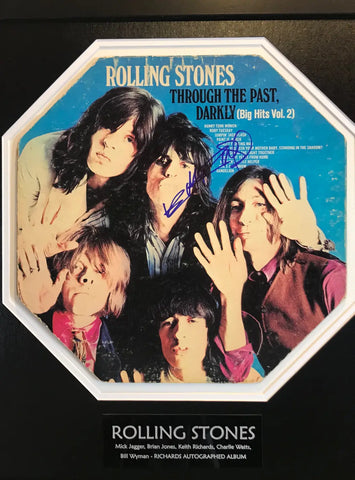
The Stones' 1969 octagonally-shaped album cover for Through The Past, Darkly
The Stones also experimented with 3D art with a quirky lenticular cover for their 1967 LP Their Satanic Majesties Request. The original plan was for the lenticular to compose the entire front of the jacket, but the record company balked due to the expense, so it was instead designed as an inset in the middle of the jacket.
Other unique Stones album covers included 1971's Sticky Fingers, with its' real zipper, the 1978 release Some Girls, which featured cut-outs of faces, and 1983's Undercover, which had stickers on its' cover.
Beyond the visual spectacle, album art often served as a form of storytelling. The gatefold sleeves of albums like The Who's Tommy and The Rolling Stones' Sticky Fingers unfolded like a book, offering listeners an immersive experience. The artwork, lyrics, and liner notes combined to create a complete package that invited exploration, fostering a sense of discovery with every listen.
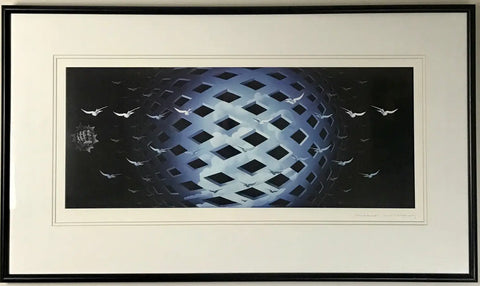
Album art makes for great wall art, like this framed lithograph of the album cover of The Who's Tommy album
Album art also had the power to provoke thought and challenge conventions. The punk movement, with its raw and confrontational music, produced album covers like the Sex Pistols' Never Mind the Bollocks, Here's the Sex Pistols – a stark and explicit statement that mirrored the band's attitude. The punk aesthetic influenced a generation of artists who used album covers as a platform for social commentary and political critique.
Even into the 90s album art continued to be creative with many examples from Nirvana's iconic Nevermind album cover photo, to the Smashing Pumpkins dreamy art on many of its' covers, to Green Day's comic book-inspired art for their debut Dookie, which was drawn by Richie Bucher. He created a world paying homage to the Bay Area punk scene that the band comes from:
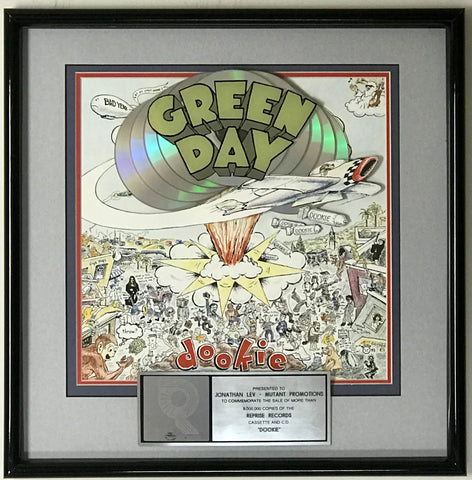 Green Day's 1998 album Dookie featured a hand drawn, comic-style world drawn by Richie Bucher
Green Day's 1998 album Dookie featured a hand drawn, comic-style world drawn by Richie Bucher
While album art flourished for decades, the rise of digital music in the late 20th century brought about its gradual decline. As physical formats like vinyl records and CDs gave way to MP3s and streaming services, album art shrank to the size of a thumbnail on a computer or smartphone screen. The intricate details and tactile pleasures of holding a physical album in your hands were lost in the transition. Moreover, the shift to digital music consumption brought with it the temptation to prioritize individual tracks over entire albums. With playlists and shuffle modes dominating our listening habits, the concept of the "album" as a cohesive work of art has been eroded. This change in consumption patterns has further diminished the importance of album art as a storytelling medium.
However, all hope is not lost for the art of album art. In recent years, there has been a resurgence of interest in vinyl records and a renewed appreciation for the tactile and visual aspects of music. Many artists and record labels are investing in high-quality packaging and artwork to entice collectors and music lovers.
Furthermore, artists continue to push the boundaries of album art in the digital age. They utilize social media platforms and interactive websites to create immersive visual experiences that complement their music. In some cases, the internet has become a canvas for album art, offering endless possibilities for creativity. Artist websites often contain art designed to accompany their tracks and albums.
In the end, the lost art of album art is simply a reflection of the changing landscape of the music industry. While digital technology has altered the way we consume music, it hasn't completely extinguished the flame of creativity that album art represents. As long as musicians and artists continue to collaborate and find new ways to captivate their audiences visually, album art will remain a vital and evolving aspect of the music world.
But there's still nothing like holding that 12x12-inch LP jacket in your hands...
While we don't always have a large selection, check out the latest album art items at MusicGoldmine here.
Want more content like this? If you're not a subscriber already, sign up for our free MusicGoldmine newsletter which comes out every two weeks. Go here to sign up.
Be the envy of all your friends! Get MusicGoldmine.com Music History in your Facebook feed each day. Just follow us on Facebook here.
All photos by MusicGoldmine.com


